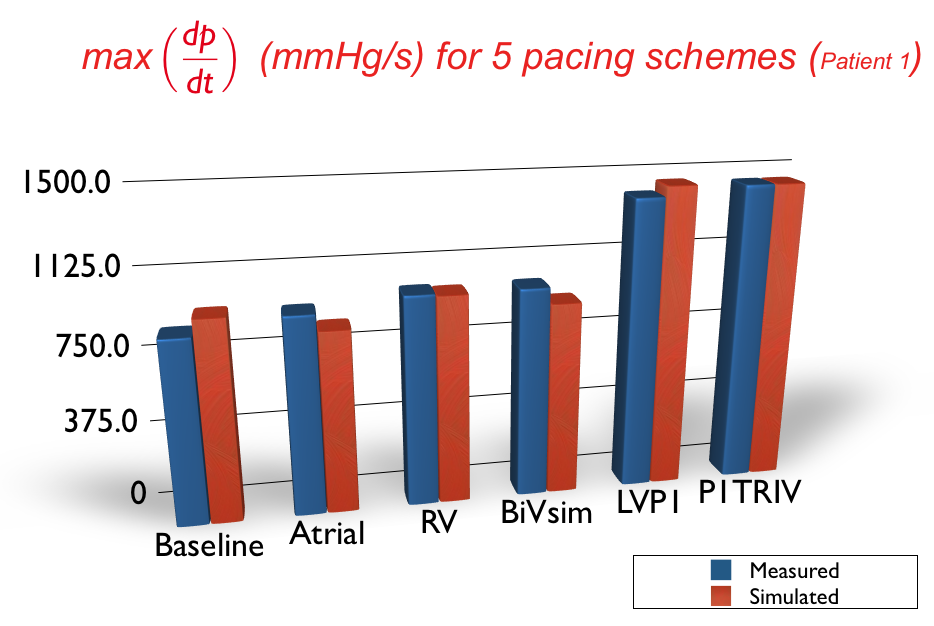Cardiac resynchronisation therapy (CRT) is an effective treatment for patients with congestive heart failure and a wide QRS complex. However, up to 30% of patients are non-responders to the pacemaker implant in terms of exercise capacity or left ventricular reverse remodelling. A number of controversies still remain surrounding patient selection, targeted lead implantation and optimisation of this important treatment. The development of biophysical models to predict the response to CRT represents a potential strategy to address these issues. Our motivation was then to demonstrate how the personalisation of an electromechanical model of the myocardium can predict the acute haemodynamic changes associated with CRT. In order to introduce such an approach as a clinical application, we needed to design models that can be individualised from images and electrophysiological mapping of the left ventricle. In this paper the personalisation of the anatomy, the electrophysiology, the kinematics and the mechanics are described. In R. Chabiniok's PhD Thesis, we used the mechanical model developed within the team in the context of a large collaboration with Inria Asclepios team and King's College London Imaging Departement to predict the haemodynamic changes of several pacing conditions on two patients, achieving good agreement with invasive haemodynamic measurements.
These promising results demonstrate the potential of physiological models personalised from images and electrophysiology signals to improve patient selection and plan CRT.
This application can be seen as a nice example of integration of our work on cardiac mechanical modelling, see the below publications.

